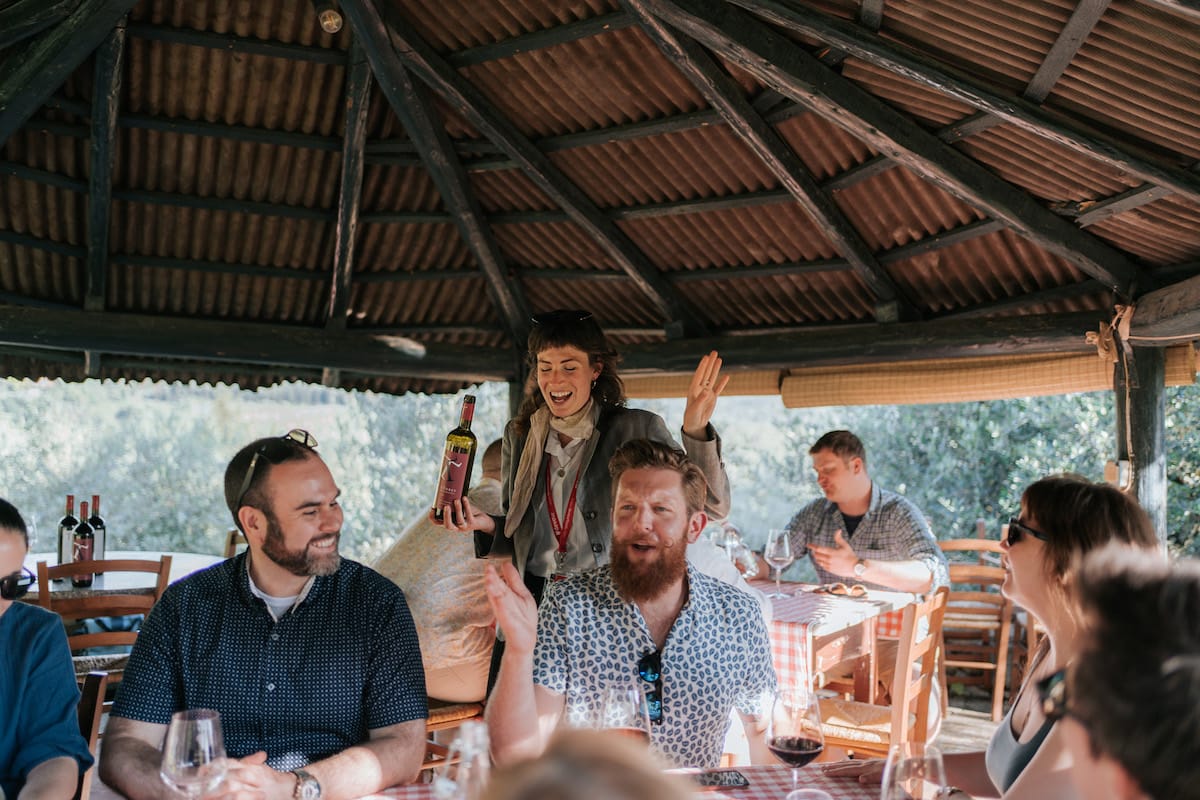
Wine Tasting in Tuscany: The Best Tuscan Wine Regions & How to Get There
June 18, 2025
Want to enjoy a wine tasting in Tuscany? Good choice! Tuscany is one of the world’s best destinations for wine-lovers: from Sassicaia to Chianti, not only are the reds, whites and dessert wines top-notch, but with their rolling hills and verdant landscapes, the Tuscan vineyards alone are breathtaking, too.
Where are the best places to try Tuscan wines? Here are our favorite regions and vineyards for wine tasting in Tuscany (plus what to know about planning a wine tasting or tour)!
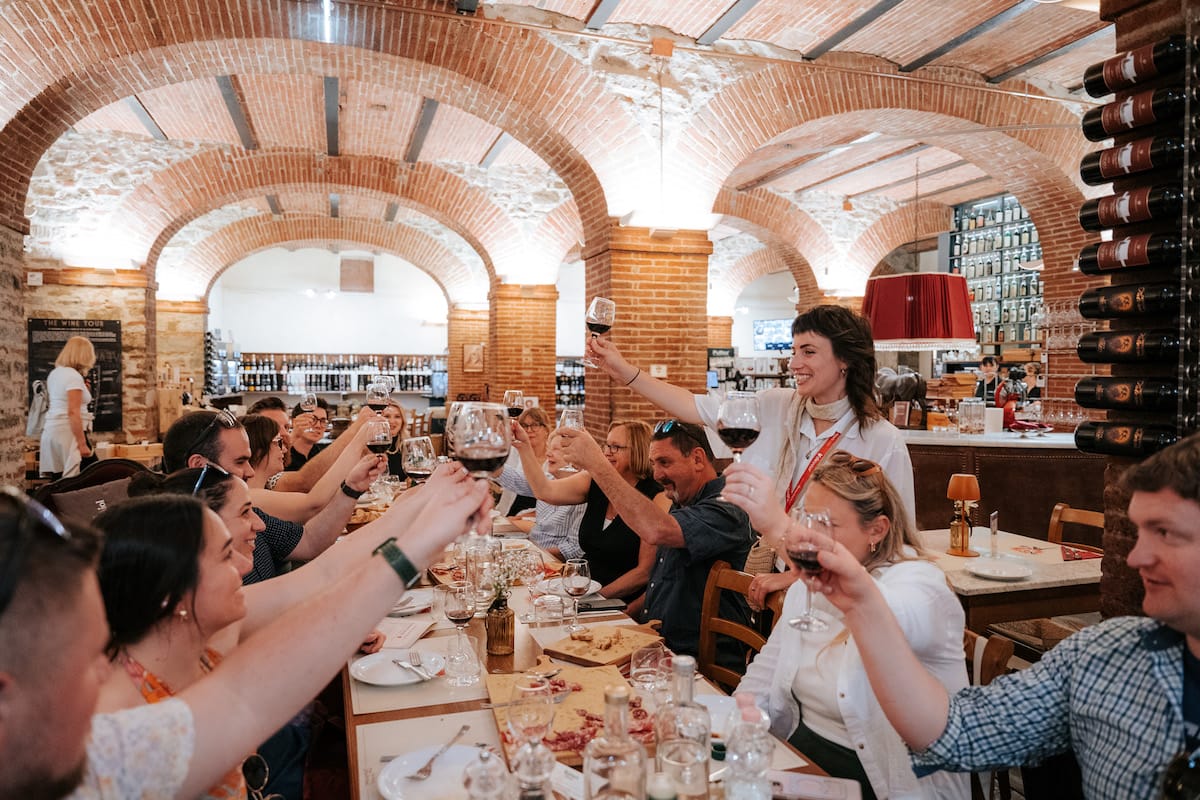
If you’re looking for a wine tasting in Tuscany, there are plenty of options.
Table of Contents
ToggleOur favorite wine regions in Tuscany
Tuscany produces so many top-notch wines, figuring out where to go for wine tastings can be a little overwhelming. Here are some of our favorite wine regions to help you get started.
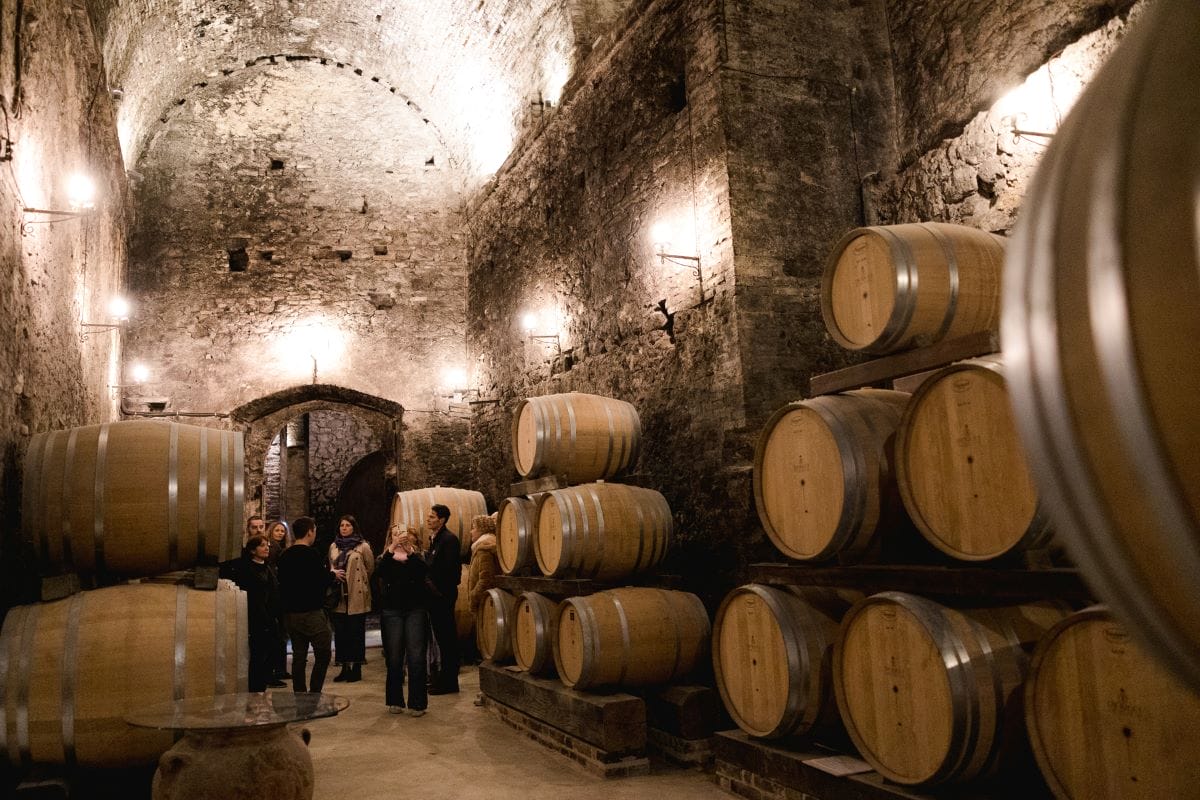
Tuscan wine goes through a special aging process.
Bolgheri
Super Tuscan lovers: Look no further than Bolgheri, right off the Tuscan coast. This area boasts mouthwatering, full-bodied wines made from sangiovese, cabernet sauvignon, merlot and syrah grapes. Bolgheri Sassicaia, one of the world’s most sought-after and expensive wines, is made with cabernet sauvignon and cabernet franc.
For those who enjoy white wine, an acidic and fruity vermentino can also be found in many of the area’s wineries.
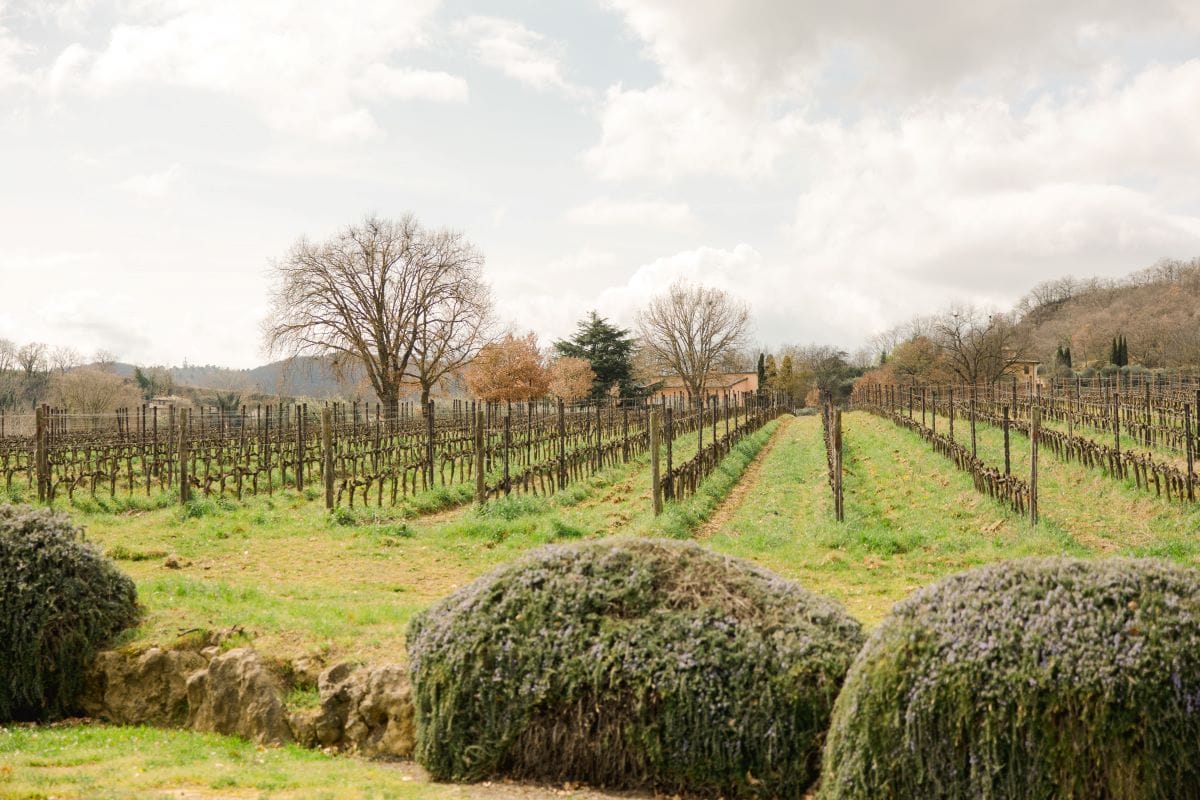
Vineyards in Tuscany are a must-visit for wine lovers.
Chianti
As one of the most well-known Italian wines, and one of the first wines ever to be exported, Chianti is a must-try in Tuscany. Chianti vineyards are spread throughout Tuscany, but to we recommend visiting the wineries in the heart of the Chianti region.
In particular, head to Greve in Chianti, located less than an hour from Florence, for beautiful castles and miles of vineyards that change color along with the seasons. Here’s where to taste chianti classico, the famous medium-bodied red wine with undertones of cherry and nuts, made with 80 percent sangiovese grapes.
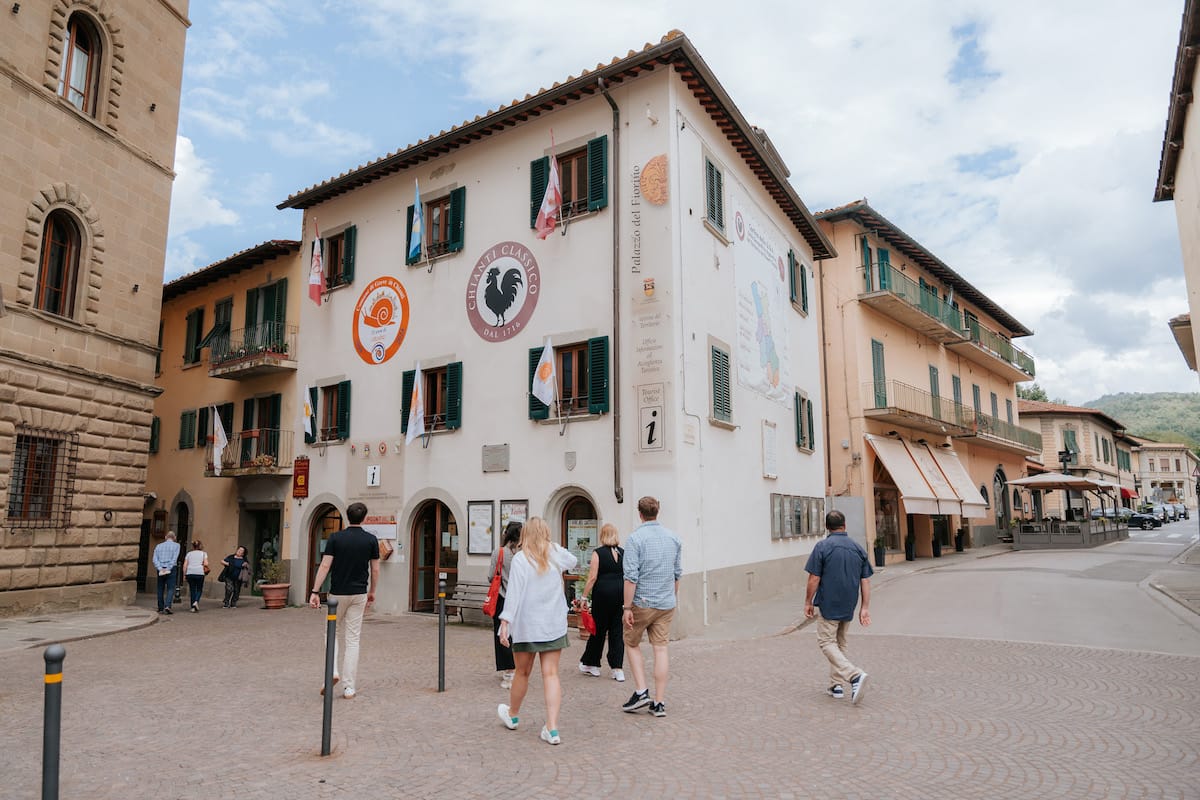
Go right into the places famous for the Chianti Classico. You won’t regret (nor forget) that Black Rooster sign.
Montalcino
For the full sangiovese experience, head to the town of Montalcino. That’s where you can taste the world-famous Brunello di Montalcino—the only wine made entirely of the lightweight, acidic grape. Just remember that this full-bodied wine will cost you: It’s expensive (and delicious) not only because of its pure composition, but also because of its four-year aging process.
Other wines from the area include Rosso di Montalcino, and Moscadello, a sweet wine made from moscato grapes.
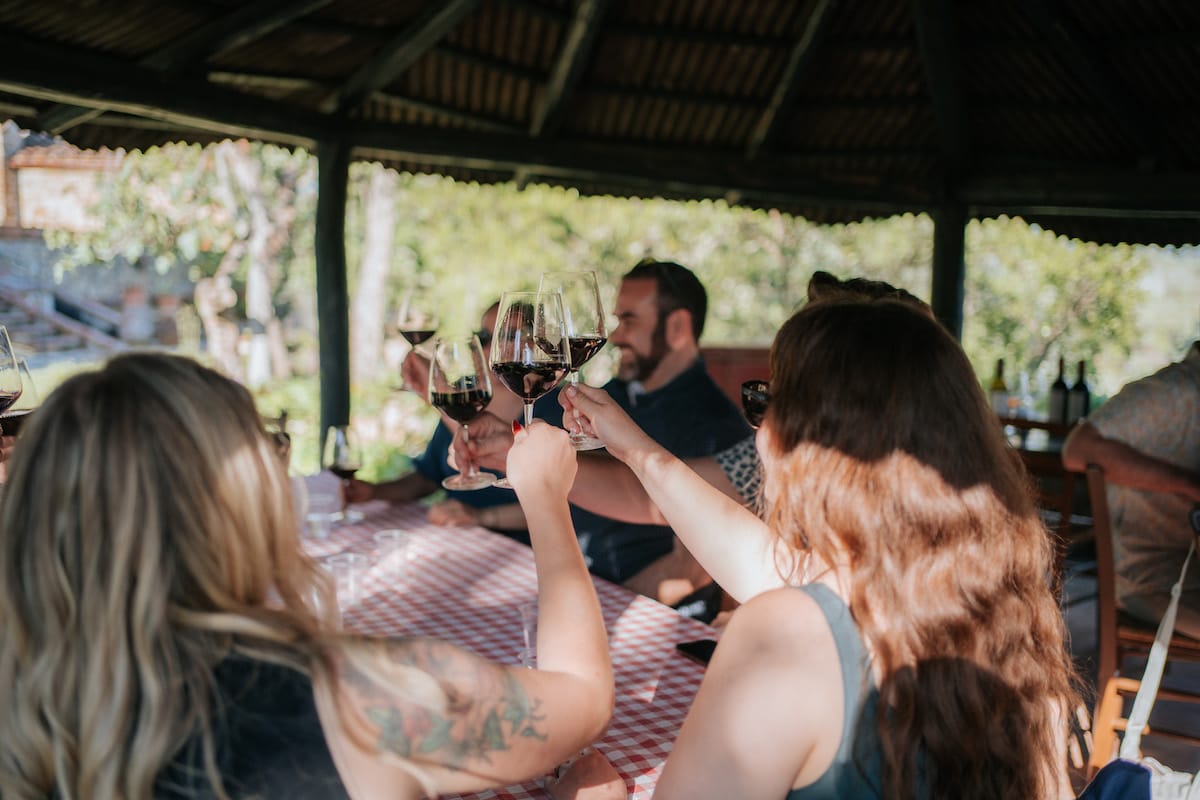
If you don’t know where to start, you may want to attend a tour where you’ll learn everything you need to know.
Montepulciano
The city center of Montepulciano is home to gorgeous renaissance churches and towers. For wine-lovers, though, Montepulciano’s real attraction is its Vino Nobile di Montepulciano, a dry, full-bodied red.
No one’s sure why Vino Nobile, or “noble wine,” got its name—but many believe that, for a long time, it was the only drink served to the nobles of the area. Here’s what we do know: The historic wine is made from dry prugnolo gentile grapes—a variation of Sangiovese—with red grapes added (up to 20 percent), and then aged in oak barrels. Oh, and it’s delicious.
For a lighter (and less expensive) wine, try the Rosso di Montepulciano.
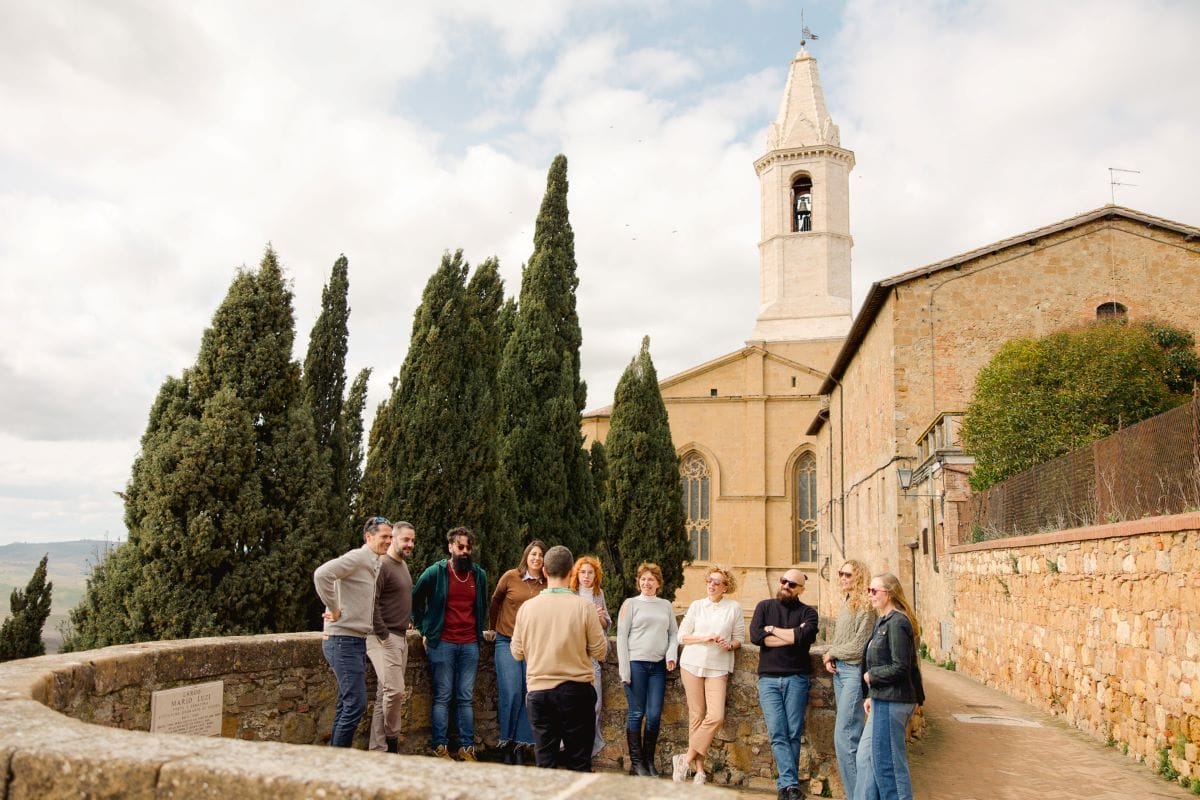
Tuscany is full of beautiful villages that have some of the best wines in Italy.
San Gimignano
The vineyards outside of San Gimignano, one of Tuscany’s most-visited towns, are home to vernaccia. Thought to be Italy’s first white wine, vernaccia is known for its golden hue and floral notes. The area is also known for San Gimignano Rosso and Chianti Colli Senesi (both red), San Gimignano Rosato (rosé) and Vin Santo (a dessert wine, often paired with cantucci, or crumbly biscuits, as a classic Tuscan dessert).
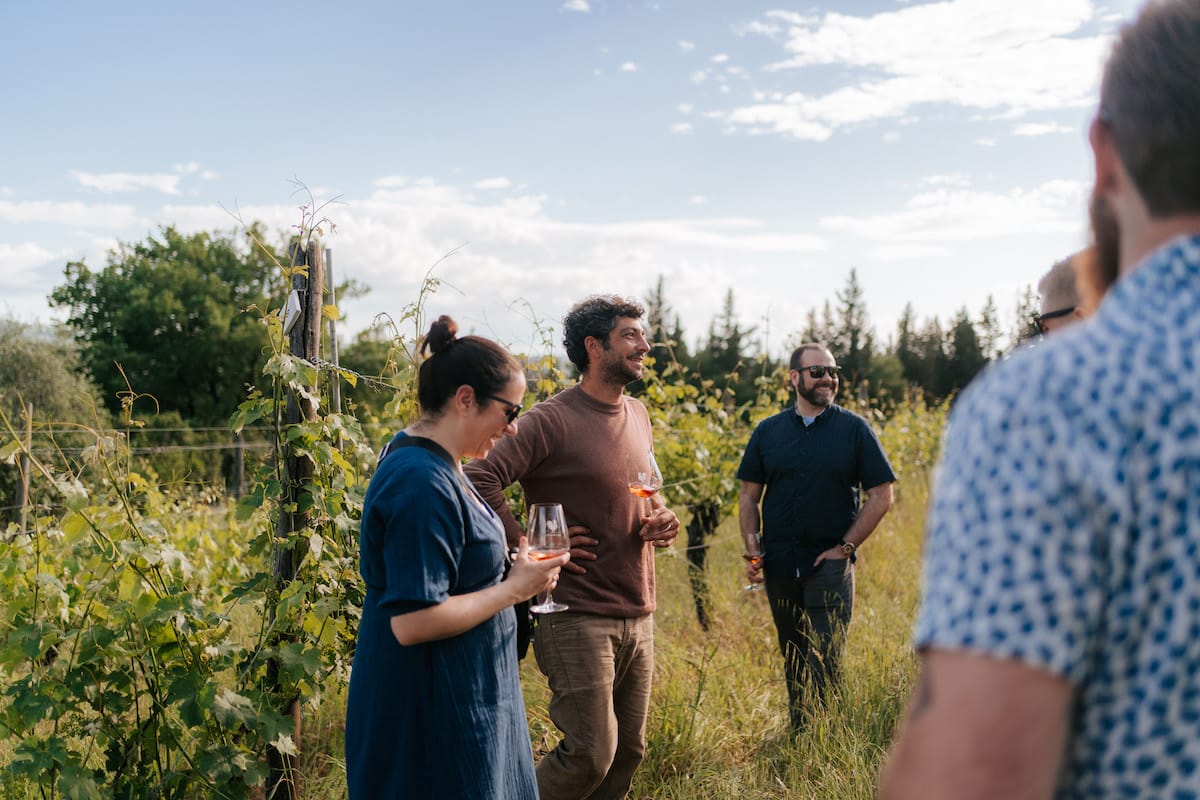
San Gimignano is one of those places internationally famous for the quality of their wine.
How to get to a wine tasting in Tuscany
The wine regions above are located less than two hours from Florence or Siena, so they can be visited either as a day trip or overnight stay. But remember that buses and trains aren’t always well-connected to the countryside, where many wineries are located, so we recommend renting a car.
Insider’s Tip: If you love wine, try to visit Italy for a wine tasting in the autumn. During the vendemmia (grape harvest) in September and October, you even can get a sneak peek of how wine is made.
Don’t want to drive yourself (or deal with planning an itinerary)? Rely on our local expertise instead: We organize both half- and full-day excursions to our favorite authentic, top-notch small vineyards and farms in Tuscany, including experiences like our half-day drive through the Chianti countryside or full-day Tuscan drive to Montepulciano and Montalcino.
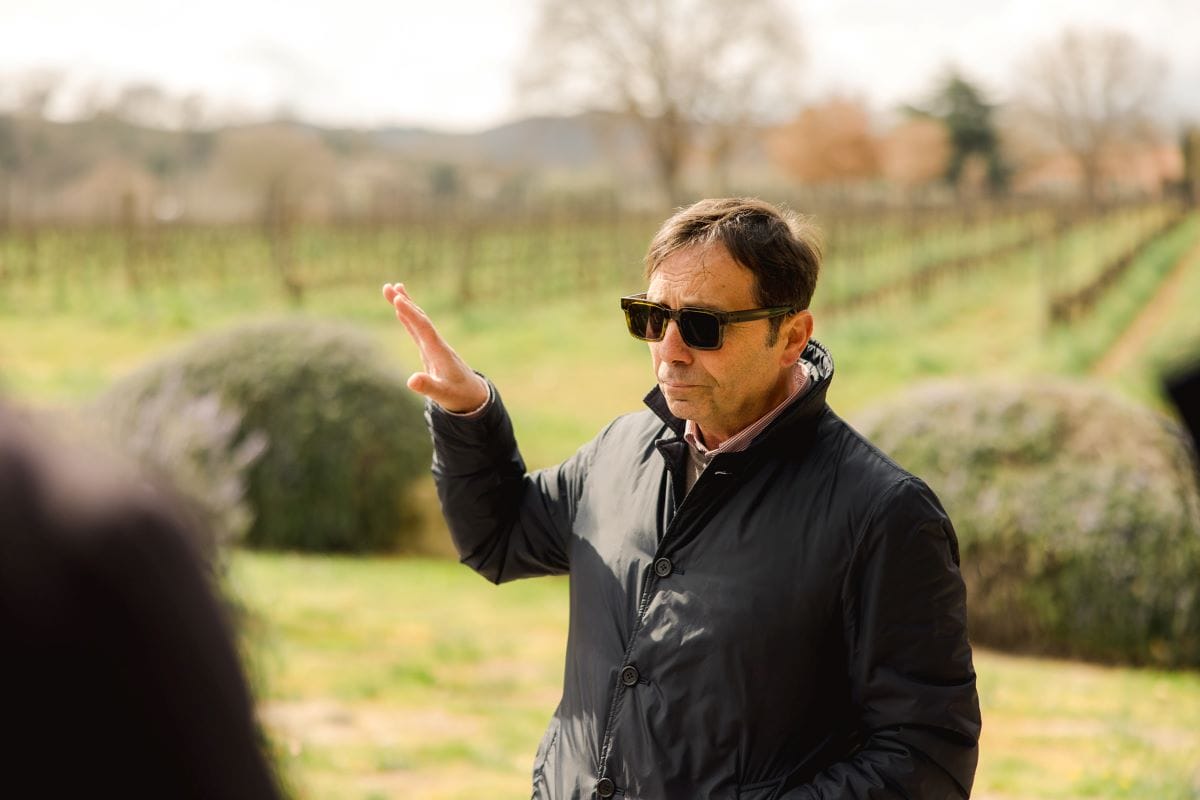
Our knowledgeable guides will introduce you to Tuscan wines and wine making.
If you don’t have time to head to the countryside, don’t worry. You can still try Tuscany’s best wines right in the cities, including Florence and Siena. Local wines can be found in bars and restaurants, of course, but we recommend heading to an enoteca—an Italian wine bar, usually offering a few light dishes and a long list of wines—for a degustazione (tasting).
If you go it alone, remember that there are hundreds of wineries to choose from—including large, historical producers and small, family-owned farms—and reservations are almost always required.
Tours and tastings can last anywhere from 30 minutes to two hours, with an average price of 10 euro to taste three wines and enjoy light snacks.
Don’t miss our easy guide to wine in Italy, including how to read wine labels, essential vocab, and what DOC really means!

Our day trips aren’t just educational, they’re fun!
The Easiest Way to Enjoy Tuscan Wine Country Stress-Free
For a seamless, unforgettable day in Tuscany, the Tuscany Day Trip from Florence with Walks of Italy is the perfect choice. This all-inclusive experience takes the pressure off planning and lets you focus on what matters—great wine, stunning scenery, and authentic Tuscan charm.
Here’s what you’ll enjoy on this best-selling tour:
-
Visits to two top wineries with guided wine tastings
-
A traditional farmhouse lunch with local Tuscan specialties
-
Free time in Siena, one of Tuscany’s most picturesque towns
-
Comfortable transportation from Florence through the rolling hills of Chianti and beyond
-
Expert local guides who share insights on wine, history, and culture
With everything organized for you, it’s the most relaxing and enriching way to discover the magic of Tuscany in just one day. Book now to sip, savor, and explore—without the stress!
FAQ Wine Tasting in Tuscany
What are the best regions for wine tasting in Tuscany?
The best regions for wine tasting in Tuscany include Chianti, Montalcino, Montepulciano, Bolgheri, and San Gimignano. Each offers a unique wine experience, from Chianti Classico’s bold reds to Vernaccia’s crisp whites.
How can I get to Tuscan wineries without driving?
You can get to Tuscan wineries without driving by joining an organized wine tour like the Tuscany Day Trip from Florence with Walks of Italy. These tours include transportation, winery access, and local guides—no car rental or logistics needed.
What should I expect during a wine tasting in Tuscany?
During a wine tasting in Tuscany, you can expect to sample 3–5 wines, learn about the wine-making process, and often enjoy light snacks or a full meal. Tours typically last from 30 minutes to two hours, and reservations are usually required.
Why should I book a Tuscany wine tour instead of going on my own?
You should book a Tuscany wine tour instead of going on your own if you want a stress-free, curated experience. Tours handle transportation, provide access to top wineries, and offer cultural insights you might miss otherwise.
If you love Italian wines as much as we do, you should check out our Tuscany day trip from Florence. This best-selling tour takes you to visit two wineries to see how some of the best wines in Italy are made. You’ll also enjoy a full farmhouse lunch, a stroll around Siena, and all the wine tastings you want!
by Elena Ciprietti
View more by Elena Ciprietti ›Book a Tour

Pristine Sistine - The Chapel at its Best
€89
1794 reviews

Premium Colosseum Tour with Roman Forum Palatine Hill
€56
850 reviews

Pasta-Making Class: Cook, Dine Drink Wine with a Local Chef
€64
121 reviews

Crypts, Bones Catacombs: Underground Tour of Rome
€69
401 reviews

VIP Doge's Palace Secret Passages Tour
€79
18 reviews

Legendary Venice: St. Mark's Basilica, Terrace Doge's Palace
€69
286 reviews









